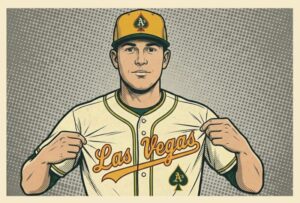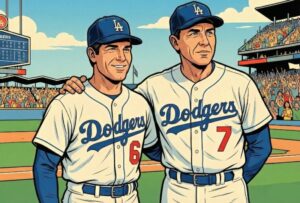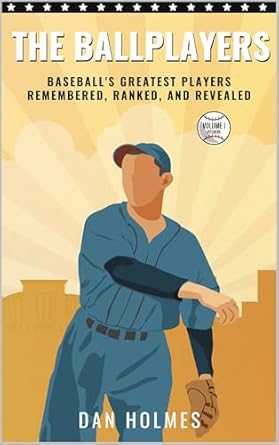Baseball outcomes are determined by more than just talent. Your ace is hammered by a team twenty games below .500, or your struggling team steals two of three from the division leaders. When you watch from home, the game appears simple enough, but what determines wins and losses is a complex combination of factors.
The unpredictable nature of baseball has always drawn fans who enjoy betting on games. Many people spend hours researching team statistics and player matchups before placing a bet. Those serious about getting the best odds often find online resources with information drawn from offshore sportsbooks reviewed and details used to compare platforms and their bonus offerings. These details also contain everything from payout speeds to market variety across international operators. Understanding what truly drives game outcomes requires the same attention to detail that separates successful bettors from casual fans.
Pitching Staff Depth
Nothing matters more than the guy taking the ball every fifth day. A starter who gives you seven decent innings keeps your bullpen fresh and gives your hitters time to solve the opposing pitcher. Teams with five reliable starters can weather injuries that destroy clubs depending on prayer.
Batters see the same pitcher differently each trip through the lineup. First time around, most starters dominate because hitters haven’t seen their stuff yet. By the second pass, batters start recognizing patterns and timing their swings better.
Relief pitching has turned into specialized warfare. Teams deploy openers against the meat of opposing lineups, then hand the ball to long relievers who eat innings. Setup men bridge the gap to closers who get the final three outs. When this works, average starters look like aces. When it breaks down, you get those ugly games where six pitchers surrender fifteen runs.
Stadium Features
Each major league ballpark plays differently because of its unique features. Coors Field provides the most obvious example, where Denver’s altitude lets fly balls travel farther while making curveballs break less sharply. The Rockies have tried storing baseballs in humidors and building their roster around pitching, but they still deal with offensive environments that teams in San Diego never face.
Foul territory varies dramatically between stadiums. Oakland’s massive foul ground helps pitchers escape trouble by turning pop-ups into easy outs. Fenway works the opposite way, sending most foul balls into the stands and keeping hitters alive longer.
Fenway’s Green Monster creates situations you won’t see anywhere else. Routine fly balls become doubles while some legitimate home runs turn into singles that carom off the wall. Players spend their entire careers learning how to play these quirks, and visiting teams often look lost trying to adjust during a three-game series.
Weather Conditions
Temperature changes how baseballs react in ways most fans never consider. Cold air makes balls heavier and causes more dramatic pitch movement, which explains why April games often feature lower scoring and more strikeouts. July heat has the opposite effect, turning warning track shots into home runs and reducing the bite on sliders.
Humidity affects everything from pitch grip to player stamina. Muggy nights make baseballs feel like waterlogged softballs while exhausting players who struggle to maintain concentration through extra-inning games. Wind direction can transform the entire character of a contest. A stiff breeze blowing out to left field turns pitchers into batting practice throwers, while headwinds rob hitters of extra-base hits they thought they had crushed.
Rain doesn’t just delay games – it changes them. Rain changes everything about how the game is played. Wet infields make routine grounders skip unpredictably, while pitchers struggle with their footing on slippery mounds. The ball becomes harder to grip, which leads to more walks and wild pitches that can swing close games.
Defensive Strategy
Defensive positioning has become a chess match between teams armed with spray charts and tendency data. Managers now shift their infielders based on where specific batters historically put the ball, reducing hit totals league-wide. Recent rule changes have limited extreme positioning, but teams still gain significant advantages by putting fielders in optimal spots.
Individual talent still trumps positioning in many situations. A shortstop with great range will turn would-be hits into outs no matter where the manager places him before the pitch. Strong-armed outfielders prevent runners from taking extra bases even when they don’t make spectacular throws, simply because base coaches know what those arms can do.
Game situations dictate defensive alignment just as much as spray charts do. Teams pull their infield in with a runner on third and fewer than two outs, trading the possibility of giving up a single to prevent runs from scoring on routine ground balls.
Offensive Approach
Building the right-handed batting order requires more thought than most fans realize. Teams now know exactly how their hitters perform against righties and lefties or how they hit with runners in scoring position. Managers completely rearrange their lineups if they know that the opposing starter struggles with left-handed hitting.
A batter who fights off tough pitches and works an eight-pitch walk does more than just get to first. He’s wearing down the starter and giving everyone in the dugout a good idea of what pitches are coming and when. Those long at-bats add up quickly, and the opposing starter rarely makes it past the sixth inning.
The numbers that matter most have changed dramatically. Teams now care more about how hard someone hits the ball than whether it finds a hole. Exit velocity and launch angle data can predict future performance better than batting average, which explains why some players with modest averages still command big contracts.





